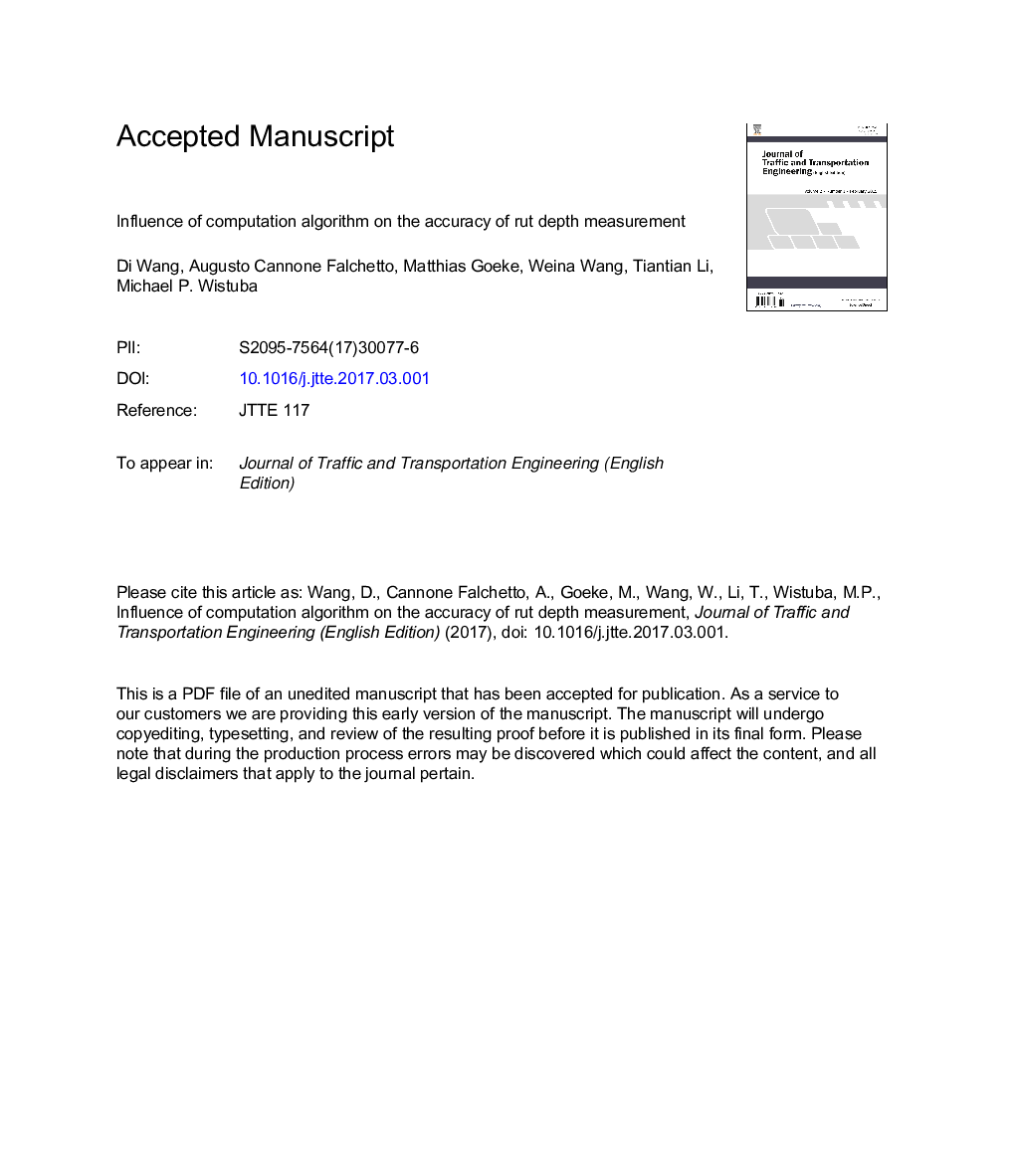| Article ID | Journal | Published Year | Pages | File Type |
|---|---|---|---|---|
| 4924684 | Journal of Traffic and Transportation Engineering (English Edition) | 2017 | 21 Pages |
Abstract
Rutting is one of the dominant pavement distresses, hence, the accuracy of rut depth measurements can have a substantial impact on the maintenance and rehabilitation (M & R) strategies and funding allocation. Different computation algorithms such as straight-edge method and wire line method, which are based on the same raw data, may lead to rut depth estimation which are not always consistent. Therefore, there is an urgent need to assess the impact of algorithm types on the accuracy of rut depth computation. In this paper, a 13-point-based laser sensor detection technology, commonly accepted in China for rut depth measurements, was used to obtain a database of 85,000 field transverse profiles having three representative rutting shapes with small, medium and high severity rut levels. Based on the reconstruction of real transverse profiles, the consequences from two different algorithms were compared. Results showed that there is a combined effect of rut depth and profile shape on the rut depth computation accuracy. As expected, the difference between the results obtained with the two computation methods increases with deeper rutting sections: when the distress is above 15Â mm (severe level), the average difference between the two computation methods is above 1.5Â mm, normally, the wire line method provides larger results. The computation suggests that the rutting shapes have a minimal influence on the results. An in-depth analysis showed that the upheaval outside of the wheel path is a dominant shape factor which results in higher computation differences.
Keywords
Related Topics
Physical Sciences and Engineering
Engineering
Aerospace Engineering
Authors
Di Wang, Augusto Cannone Falchetto, Matthias Goeke, Weina Wang, Tiantian Li, Michael P. Wistuba,
